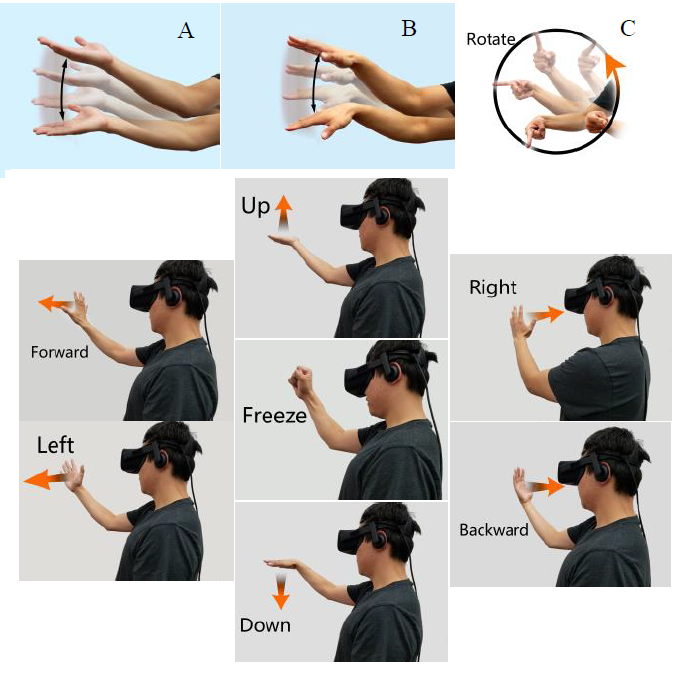
Most 3D manipulation techniques directly map user’s hand position to the position of a virtual object, but this “natural” metaphor is not without its limitations. We present Force Push, a hyper-natural gesture-to-action mapping for object manipulation in virtual reality (VR).
It maps hand gestures derived from human-human interaction to physics-driven movement of an object. Force Push maps quantitative features of dynamic gestures to the properties of the physics-based simulation, so both coarse-grained ballistic movement and fine-tuned precise movement are achieved naturally. We hypothesized that Force Push would result in a fun and magical user experience while still providing good task performance.
In an initial experimenting using a limited object translation task, the performance and user experience of this novel method was compared against a traditional direct manipulation interface with two control-display ratios. The experiment showed that:
- Force Push appeared to be controllable even in extremely difficult tasks.
- Direct control provided better task performance in most cases.
- However, in extremely difficult tasks where even two C/D ratios struggled to cover the intended range of control, there was some evidence for potential advantages of the gesture-to-force mapping.
- Gesture-to-force appeared to be more adaptive and robust to the change of task difficulty.
- Preliminary results on subjective user experience show that users preferred Force Push for its hedonic qualities, such as being natural and fun to use.
Journal Articles
Force Push: Exploring Expressive Gesture-to-Force Mappings for Remote Object Manipulation in Virtual Reality Journal Article
In: Frontiers in ICT, vol. 5, pp. 25, 2018.
